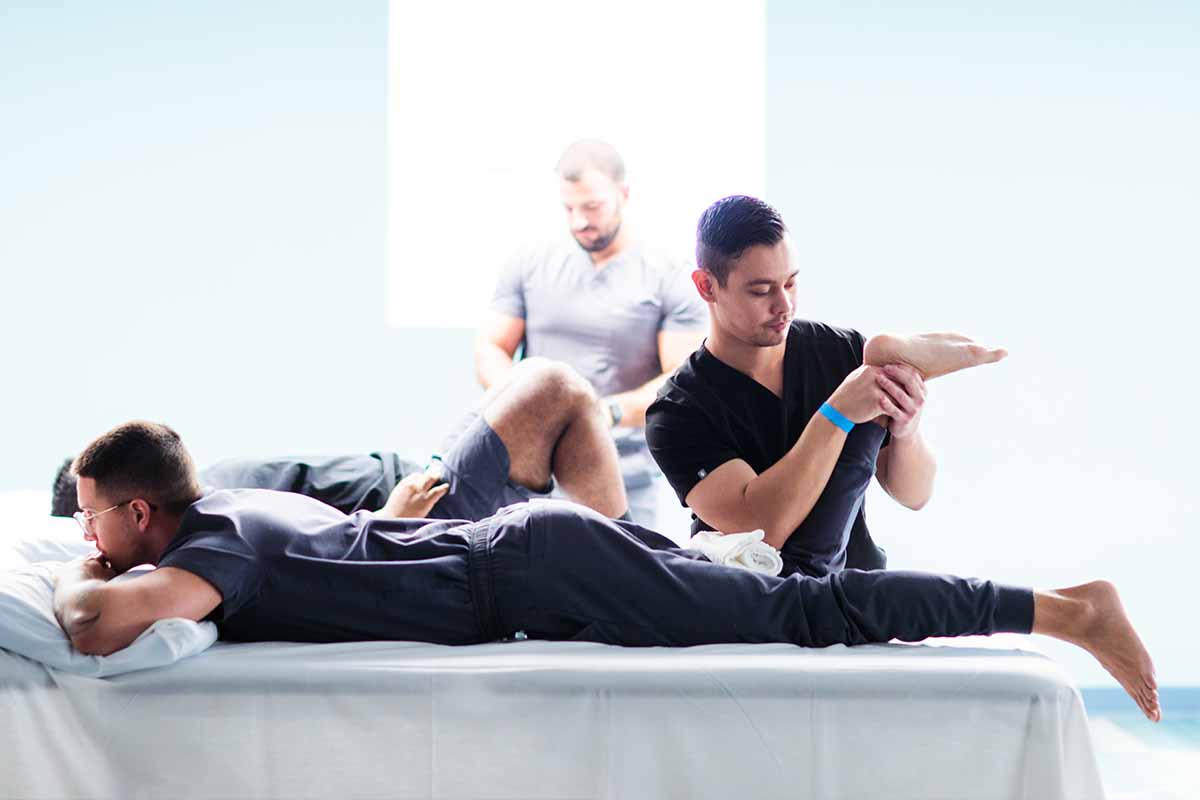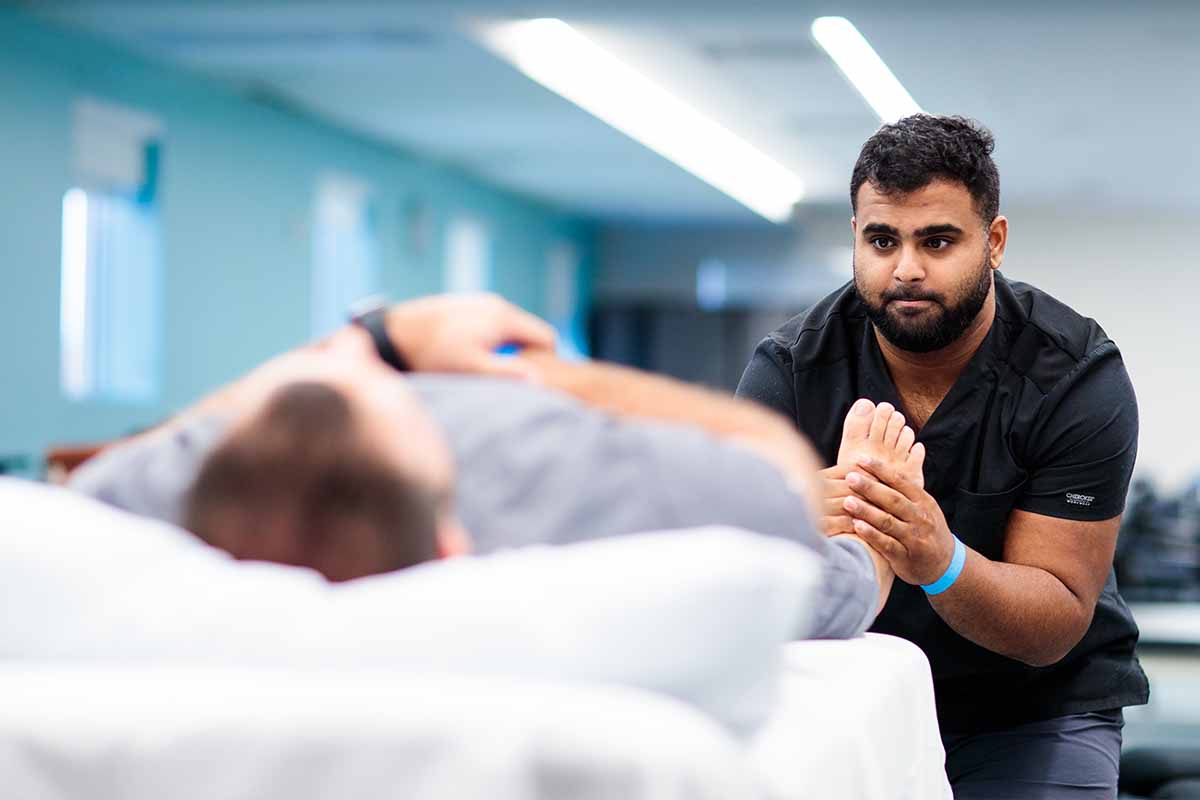Dr. Jamal Cort, DPT (left) USAHS alumni, Head Athletic Trainer and Director of Rehabilitation for the Utah Jazz
Dr. Jamal Cort, DPT, was not going to miss his shot. He had always dreamed of being a part of the National Basketball Association (NBA). “I knew I wanted to be in the NBA – it was always my end goal,” said Cort.
In 2013, he landed his first role in professional sports. For two summers, he worked as an athletic training intern with the Minnesota Vikings. This experience, along with his time as a seasonal assistant athletic trainer with the New York Knicks, inspired him to pursue an advanced physical therapy (PT) degree.
“I worked alongside several dual credential physical therapists (PTs). I admired their autonomy and what they were able to do clinically. I saw this as a sign from the universe that it was time to go back to school, so I went for it,” he said.
Cort was a part of the inaugural Doctor of Physical Therapy (DPT) class at the University of St. Augustine for Health Sciences (USAHS) in Miami. He graduated in the spring of 2019. He also holds a Master of Science in Athletic Training and Bachelor of Science in Health and Fitness Training from Daemen University.
In 2022, Cort was named Head Athletic Trainer and Director of Rehabilitation for the Utah Jazz. “The atmosphere is amazing, and the players are super respectful. Going through the rigors of a season together brings us closer and we lean on each other for support.”


Dr. Jamal Cort, DPT
The hands-on practice and skills that he gained at USAHS gave him a competitive advantage. Cort explained that as sports therapy evolves, many professional athletes seek manipulative therapy, a physical method used to treat musculoskeletal pain and disability.
“My experience in manual therapy gave me an upper hand – it’s how I bring value to my medical staff, and how I support players,” he said.
Cort’s approach includes soft tissue manipulation and joint mobilization. He said that having good, experienced hands is key in diagnosing patients and creating personalized treatments. He focuses on preventative care, but also treats injuries.
“The most rewarding part of my job is watching an athlete put in the work to heal and get back on the floor,” Cort said.
Fortunately, working at the professional level typically means less pushback from patients. Cort said that most athletes trust him and respect his intentions. He has the same conversation with everyone that he treats: He explains that he wants them to be comfortable playing again, and also hopes to help them enjoy life outside of basketball. “I make myself more human to them. I’m here to do a job, but I also care about you and want you to live a fulfilling life.”


A day in the life of Dr. Cort? There are five types of workdays, he said.
During the offseason, he reviews athlete histories and is available to support players during draft workouts. Each season, he comes in early for treatments and to cover practice and post-practice. Then there are travel days – which often means an early morning or overnight travel.
“In sports, things change daily, and you have to be flexible and deal with issues as they happen,” he said.
He praises the team culture and environment. “No matter how hard a day is, someone always says something that puts a smile on your face.”
He also appreciates the ability to travel and discover new places – on and off the court. He enjoys going to New York to see his family, and also visiting Dallas, Miami and Phoenix. “If we have an extra day, I get to explore a nice city and reconnect with friends across the country.”
Relationships play a big part in his success. He learned the importance of cultivating lasting connections while at USAHS. Cort built close-knit friendships within his cohort. “It’s the thing that helped me the most – I had someone to hold me accountable and remind me to practice.”


Cort continues to be inspired by fellow athletic trainers and physical therapists. Some of them took the time to review his essays and write letters of recommendation. “Now we’re colleagues and see each other regularly. I have good friends on almost every team in the NBA, and without that I wouldn’t have this job,” he said.
What’s his best advice for aspiring athletic trainers and physical therapists? He said the only way to find a role in professional sports is to get in the trenches. “Find a way to work with a sports team – through an internship, shadowing opportunity or a residency. It’s one thing to treat someone in a clinic, but in regard to making it to the professional level, it’s more meaningful to work with an athlete in their environment.”
He recognizes that everyone’s journey is unique, and that realizing your dream often doesn’t happen overnight. “Be patient,” Cort advised.
What’s on the horizon for him? “It would be fun to win a championship.” Long term, he’d like to teach. “It’s something I’m passionate about – preparing future athletic trainers and physical therapists – and it’s a good way to give back to the profession,’ he said.
No matter what, we know his future is nothing but net.
Learn more about USAHS’ Doctor of Physical Therapy (DPT) program and apply today.









